Ancient Papyrus Reveals Millennia Old Astronomical Secret: The ‘Demon Star’ Algol Does Exist
A. Sutherland - AncientPages.com - In 1943, an ancient papyrus was bought by the Cairo museum.
It was written in Hieratic and although portions of it were eaten away by ants, it was a very precious ancient document.
The papyrus contained three separate books dealing with astronomy. One of the books was the Cairo Calendar, and now it reveals an ancient astronomical secret.
Papyrus Museum, Cairo, Egypt. The oldest Egyptian calendar. Ancient Egyptians knew about Algol, the Demon Star 3200 years ago.
A research team from Finland is now suggesting that ancient Egyptians were familiar with the Demon Star and its odd behavior already 3200 years ago! Researchers performed a statistical analysis of the Cairo Calendar mythological texts, and their analysis revealed that the periods of Algol and the Moon strongly regulated the actions of deities in this calendar.
The period of the binary star Algol was 2.850 days three millennia ago. The study also confirmed that the brightest phases of Algol and the Moon had particularly positive meanings for the Ancient Egyptians.
For religious reasons, the ancient Egyptians have recorded this period into the Cairo Calendar, which describes the repetitive changes of the Raging one. Cairo Calendar may be the oldest preserved historical document of the discovery of a variable star!
Ancient Egyptian scribes wrote Calendars of Lucky and Unlucky Days that assigned good and bad prognoses for the days of the year. The prognoses were based on mythological and astronomical events considered influential for everyday life.
The best-preserved calendar is the Cairo Calendar (hereafter CC) in papyrus Cairo 86637 dated to 1271-1163 B.C.
Algol is remarkable in many ways.
It seemed to defy the general rule of astrophysics that more massive stars evolve faster because the more massive Algol A has not evolved away from the main sequence, but the less massive Algol B has already evolved to the subgiant stage.
This famous "Algol paradox" was finally resolved only about half a century ago. Algol A was less massive than Algol B when this system was formed.
Algol brightens and dims every 2.867 days, a phenomenon first described in semi-modern western astronomy by John Goodricke, who wrote about what he saw with the naked eye back in 1783.
Although it is highly unlikely the ancient Egyptians could have known that the dimming was caused by one of the binary stars passing in front of the other, they recorded Algol's unusual activity on regular basis. The Demon Star's movements were described in the Cairo Calendar that has managed to survive over thousands of years.
Ancient Egyptians were highly sophisticated astronomers who possessed knowledge that inspired them in their daily lives. Astronomical alignments also played a very important role in the orientation of ancient Egyptian temples.
Written by – A. Sutherland AncientPages.com Senior Staff Writer
Copyright © AncientPages.com. All rights reserved. This material may not be published, broadcast, rewritten or redistributed in whole or part without the express written permission of AncientPages.com.
More From Ancient Pages
-
 Voynich Manuscript: Ancient Book Nobody Is Able To Read
Artifacts | Jun 24, 2013
Voynich Manuscript: Ancient Book Nobody Is Able To Read
Artifacts | Jun 24, 2013 -
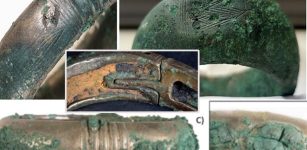 Intriguing Hoard Of Bronze Age Bracelets From Brittany, France Remains An Archaeological Puzzle
Featured Stories | Jan 30, 2024
Intriguing Hoard Of Bronze Age Bracelets From Brittany, France Remains An Archaeological Puzzle
Featured Stories | Jan 30, 2024 -
 Secrets Of Viking Age Shields Finally Revealed
Civilizations | Oct 7, 2020
Secrets Of Viking Age Shields Finally Revealed
Civilizations | Oct 7, 2020 -
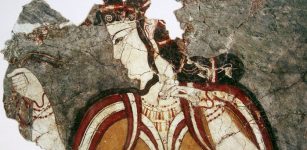 Genetic Mystery Solved: Ancient DNA Reveals Greeks Descended From The Minoans And The Mycenaeans
Archaeology | Aug 4, 2017
Genetic Mystery Solved: Ancient DNA Reveals Greeks Descended From The Minoans And The Mycenaeans
Archaeology | Aug 4, 2017 -
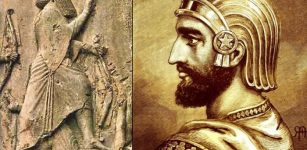 Murder Of Bardiya: Son Of Cyrus The Great And The Riddle Of The Impostor
Historical Figures | Dec 7, 2018
Murder Of Bardiya: Son Of Cyrus The Great And The Riddle Of The Impostor
Historical Figures | Dec 7, 2018 -
 88 Ice Age Human Footprints In Utah Desert Shed New Light On Ancient Americans
Archaeology | Aug 11, 2022
88 Ice Age Human Footprints In Utah Desert Shed New Light On Ancient Americans
Archaeology | Aug 11, 2022 -
 Traditional Viking-Age Crafts: Glass Beadmakers And Their Secrets
Archaeology | Oct 4, 2022
Traditional Viking-Age Crafts: Glass Beadmakers And Their Secrets
Archaeology | Oct 4, 2022 -
 Native Americans Helped Shape The Klamath’s Forests For A Millennia Before European Colonization
Archaeology | Mar 21, 2022
Native Americans Helped Shape The Klamath’s Forests For A Millennia Before European Colonization
Archaeology | Mar 21, 2022 -
 Baku’s Mysterious Maiden Tower – Legend Of The Daughter Of Fire Who Saved The Sacred Temple May Be True
Featured Stories | Jul 5, 2021
Baku’s Mysterious Maiden Tower – Legend Of The Daughter Of Fire Who Saved The Sacred Temple May Be True
Featured Stories | Jul 5, 2021 -
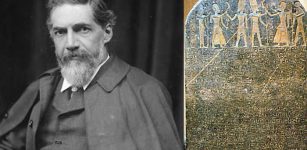 On This Day In History: Famous British Archaeologist And Egyptologist Sir Flinders Petrie Born – On June 3, 1853
News | Jun 3, 2016
On This Day In History: Famous British Archaeologist And Egyptologist Sir Flinders Petrie Born – On June 3, 1853
News | Jun 3, 2016 -
 Yakhchals: Ingenious Ancient ‘Refrigerators’ Could Store Ice In The Hot Desert
Ancient Technology | Sep 15, 2018
Yakhchals: Ingenious Ancient ‘Refrigerators’ Could Store Ice In The Hot Desert
Ancient Technology | Sep 15, 2018 -
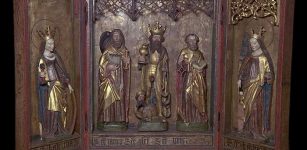 History Of Middle Ages Altarpieces Has Been Re-Written
Archaeology | Mar 10, 2018
History Of Middle Ages Altarpieces Has Been Re-Written
Archaeology | Mar 10, 2018 -
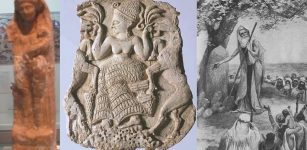 Lost And Forgotten Goddess Asherah – Queen Consort Of The Sumerian God Anu And Ugaritic God El
Biblical Mysteries | Apr 12, 2017
Lost And Forgotten Goddess Asherah – Queen Consort Of The Sumerian God Anu And Ugaritic God El
Biblical Mysteries | Apr 12, 2017 -
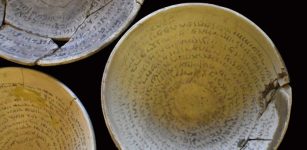 Ancient Magical Bowls Inscribed With Spells And Other Rare Artifacts Seized In Jerusalem Raid
Archaeology | Mar 14, 2022
Ancient Magical Bowls Inscribed With Spells And Other Rare Artifacts Seized In Jerusalem Raid
Archaeology | Mar 14, 2022 -
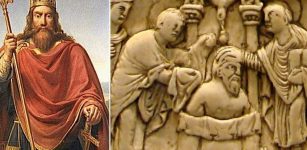 What Was Lex Salica?
Ancient History Facts | Dec 13, 2017
What Was Lex Salica?
Ancient History Facts | Dec 13, 2017 -
 Keshwa Chaca – Last Suspension Rope Bridge Of Inca People
Ancient Traditions And Customs | Apr 17, 2019
Keshwa Chaca – Last Suspension Rope Bridge Of Inca People
Ancient Traditions And Customs | Apr 17, 2019 -
 Evidence Humans Used Fire 1 Million Years Ago In Israel Discovered By Artificial Intelligence
Archaeology | Jun 15, 2022
Evidence Humans Used Fire 1 Million Years Ago In Israel Discovered By Artificial Intelligence
Archaeology | Jun 15, 2022 -
 Dwarfie Stane: Mysterious 5,000-Year-Old Rock-Cut Tomb On Dark Enchanted Island Of Hoy, Scotland
Featured Stories | Feb 21, 2023
Dwarfie Stane: Mysterious 5,000-Year-Old Rock-Cut Tomb On Dark Enchanted Island Of Hoy, Scotland
Featured Stories | Feb 21, 2023 -
 Boomerangs Were Used To Shape Stone Tools By Aboriginal People
Archaeology | Aug 16, 2022
Boomerangs Were Used To Shape Stone Tools By Aboriginal People
Archaeology | Aug 16, 2022 -
 Bartholomew Roberts Was Forced To Become A Pirate
Featured Stories | Aug 20, 2019
Bartholomew Roberts Was Forced To Become A Pirate
Featured Stories | Aug 20, 2019

